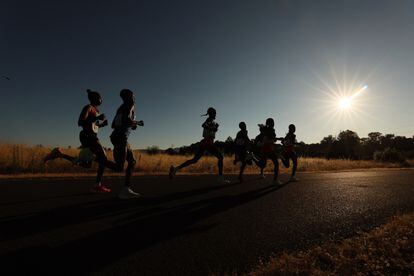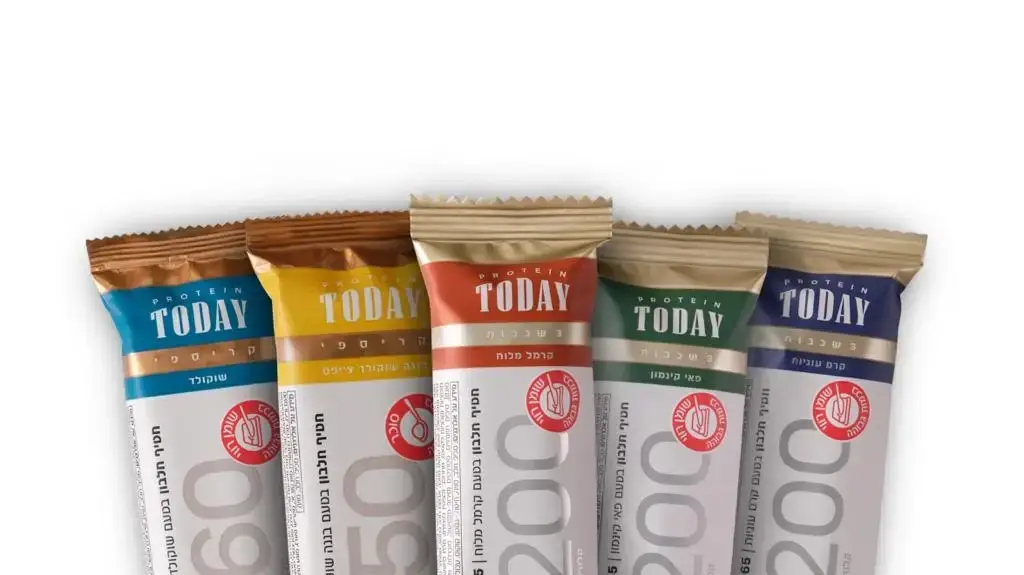Several athletes compete in the women's marathon of the Oregon22 World Athletics Championships in Eugene (United States). Etienne Laurent (EFE)
Sugar brings Western society upside down due to the metabolic disorders generated by the excessive consumption of free and added sugars.
But, paradoxically, if you have to dip into all the body's glucose reserves at a specific moment, those provisions go a long way.
To be more exact, four or five grams of glucose usually circulate in the blood, according to other studies.
Each gram of glucose can generate four calories.
That is, in the blood we have energy for at most 20 calories.
pull the reserves
To this glucose in circulation, we must add about 400 grams of glycogen (the format that glucose adopts when it is stored) in the muscles and another 100 in the liver.
It is where the body reaches for when it needs more wood, for example, because we have started running, swimming or dancing.
When doing sports, the liver produces more glucose in a complicated process involving insulin, catecholamines, glucagon, cortisol and interleukin 6. Even so, reserves are limited;
much more in the case of non-professional athletes.
In people with a commendable physical condition (70% of VO2 max, the amount of oxygen that the body can process, typical of male athletes), a diet high in healthy carbohydrates (the famous “carbohydrate load” of the days prior to the competition) and a well-worked muscle mass without injuries, the amount of glycogen stored in the muscles could reach around 800 grams.
In a non-professional athlete, the VO2 max usually stays at 50-65% in the case of men and 40-55% in the case of women.
Muscle mass is also not that of an Olympic medalist.
Between one thing and another, in the best of cases, glycogen storage would not reach 700 grams, being more likely to be around 550 grams, according to Aitor Viribay,
Adding all that glycogen distributed by the body, about 2,200 calories could be obtained, leaving the deposits completely empty.
Even so, insufficient for the around 3,000 calories that several Spanish experts calculated are burned on average in the Valencia marathon, the most populous of those held in Spain.
It is not because halfway through the race they hit the dreaded "runner's wall" (or the cyclists' assholes), a moment of energy faltering that occurs when there is no more glucose to burn;
is that the body has to start burning fat to keep running.
These reserves are vastly more abundant, but energetically less efficient for running at full speed.
“You can finish a marathon by pulling only on your fat stores.
Yes, at a very low rate.
If you want to go to the maximum you have to replenish glucose ”, explains Belén Rodríguez Doñate, doctor in Nutrition and graduate in Food Science and Technology from the Complutense University of Madrid.
But eating in the middle of a race is not easy, nor does it always feel good for the digestive system.
You have to dose throughout the competition and teach the body to assimilate that extra glucose.
And that's another marathon that, if not done properly, can end in ignominious cramping or vomiting.
The gels are loaded by the devil
Many well-trained runners have seen their dreams of finishing a marathon dashed by "a gel gone bad."
Carbohydrate gels are concentrates of sugars and other nutrients (minerals, amino acids, caffeine...) that would be like an easy-to-swallow energy refueling during the race to be able to continue running at the highest level.
There are flavors of all kinds, from the classic orange to those with a mojito flavor.
The point is that you can't ingest all the glucose you need for the race at once;
there is a limit set by the body's own ability to assimilate sugars.
If the race lasts three, five or 10 hours, that fuel will have to be supplied every hour.
“On average, most people can only oxidize a maximum of 90 grams of carbohydrates per hour.
However, to oxidize this amount, it is necessary to ingest more than 90 grams per hour”, points out Professor Javier T. González, from the University of Bath.
González is part of a team of scientists that has recently successfully demonstrated this thesis with cyclists who were given 120 grams of carbohydrates every hour during the 180-minute test.
In the trial, there was a bit of everything: gels, gummies and glucose drinks.
Each product had a millimetric mixture of one part fast-acting sugars (glucose and maltodextrin) and 0.8 parts slower-absorbing sugars (fructose, in this case).
Gastrointestinal disturbances in the volunteers were minimal.
"To achieve high rates of absorption and oxidation of carbohydrates, it is recommended that athletes ingest mixtures of carbohydrates that contain glucose and fructose in a ratio close to 1:1", explains González.
Training the gut
Endurance athletes not only have to train the psychological strength to endure several hours cycling or running.
There is more and more evidence that you also have to train your guts so that they don't play tricks on the day of the competition.
“There will be days when you go out to train with low glycogen availability so that the body adapts to using fat to meet energy demands.
Other times, it will be the opposite, and we will be administering 30, 60 or 90 grams of carbohydrates per hour.
Everything will depend on the distance and the difficulty of the test, and on what the sports nutrition professional considers appropriate based on the level of training and characteristics of that athlete," says Rodríguez Doñate.
This professional, who is also a long-distance mountain runner, emphasizes that what should never be done is to stand at the starting line of a race without having previously rehearsed the nutrition strategy.
It is one thing for the intestine of an ideal human to be able to assimilate those 90 grams of carbohydrates, and quite another for the intestine of a specific runner to receive those amounts without flinching.
"The nutrition strategy is also trained so that later you don't have to regret it," she warns.
A runner feeling sick after taking a gel in a race may not be just because of the amount of carbs.
“Many factors influence, from when you have taken it to whether it is accompanied by the proper intake of water and sodium, because when running you sweat a lot and lose a lot of sodium.
Without forgetting the genetic factors: there are people with a bomb-proof intestine and others that are more delicate”, he points out.
All this is seen in the training sessions of the weeks prior to the competition, testing gels or other carbohydrate concentrates.
Some people find watermelon-flavored gels nauseating, but tolerate peach-flavored jellies with no problem.
Or they prefer to prepare a glucose drink on the go (this is more common in cycling or ultramarathons if they carry their own bottle or hydration pack with them).
And others find gels disgusting and prefer to stop and have an energy bar, even if it means having to stop to avoid choking.
Can you be a carb freak?
There are athletes who can take a gel every 45 or 60 minutes without flinching;
there are those who, starting from the third, have their guts turned upside down.
“It seems that there are big differences between people, although we don't yet have the science to understand what explains these differences.
It may be due in part to the usual intake of carbohydrates and, in part, to other physical characteristics of these people," says González.
Results from studies in animal models support the idea that the gut is adaptable and may increase carbohydrate absorption capacity when exposed to high carbohydrate content.
It is not yet known where the limits would be, but sports nutrition is still a very young science.
Athletes have to train hard and not release anything on the day of the competition.
No slippers, no gels.
You can follow EL PAÍS
Salud y Bienestar
on
,
and
.







